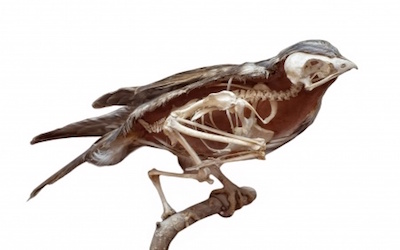PTE考生目前最大的问题之一就是练习题缺乏。除了有限的基本官方书(PLUS,Testbuilder, OG)之外就没有题了。很多英语基础不是很扎实的同学很难找到练习材料。悉尼文波雅思PTE培训学校专门为澳洲,尤其是悉尼、墨尔本的PTE考生准备了适合PTE听力阅读练习的科学60秒。各位PTE同学可以练习PTE听力中的summarise spoken text和PTE口语中的retell lecture,PTE听力口语-科学60秒-Frosty Moss练习记笔记技巧和复述。废话少说,下面开始:
以下是墨尔本悉尼文波PTE雅思培训学校为大家整理的原文材料:
For earthbound creatures like us, flight just seems so fantastical. How do birds and bats and other flying beasties manage to get off and stay off the ground? Well, having wings obviously helps. And bird bones are hollow and seem delicate, which should help lighten the load.
Or so you’d think. But a new study shows that songbirds’ bones are actually pretty tough. In fact, they’re more dense than the bones of mammals of the same size. The results appear in the Proceedings of the Royal Society: Biological Sciences. [See http://bit.ly/aODM0G]
For centuries, biologists have known that bird bones are thin and hollow. Yet bird skeletons don’t actually weigh any less than the skeletons of similarly sized mammals. To sort out this seeming discrepancy, Elizabeth Dumont of the University of Massachusetts Amherst studied the skulls and limb bones of song birds, rodents and bats. And she found that, on average, bird bones are the densest, with bat bones coming in a close second.
That denseness makes Tweety’s thin little bones surprisingly strong and stiff, good structural features for flight. And thus for keeping those bones from winding up in the mouth of a hungry mammal. Sorry, Sylvester.
—Karen Hopkin
墨尔本悉尼文波PTE雅思培训学校原创首发
更多精彩请关注wenbo_tv3





